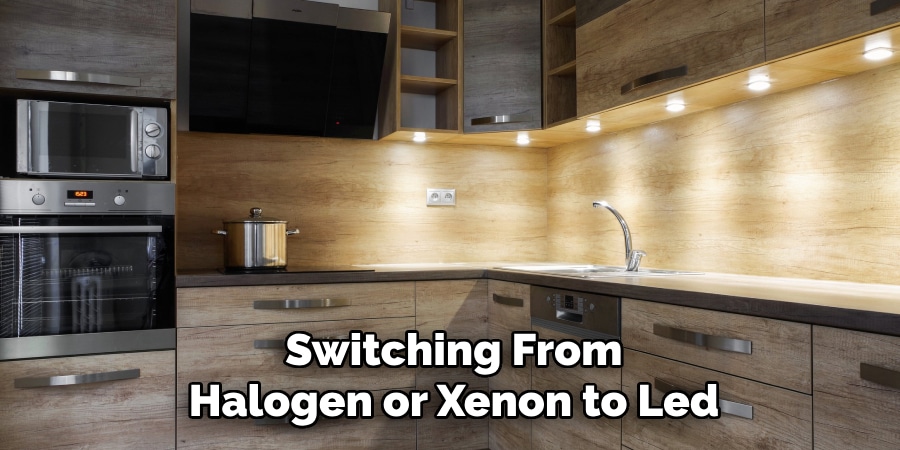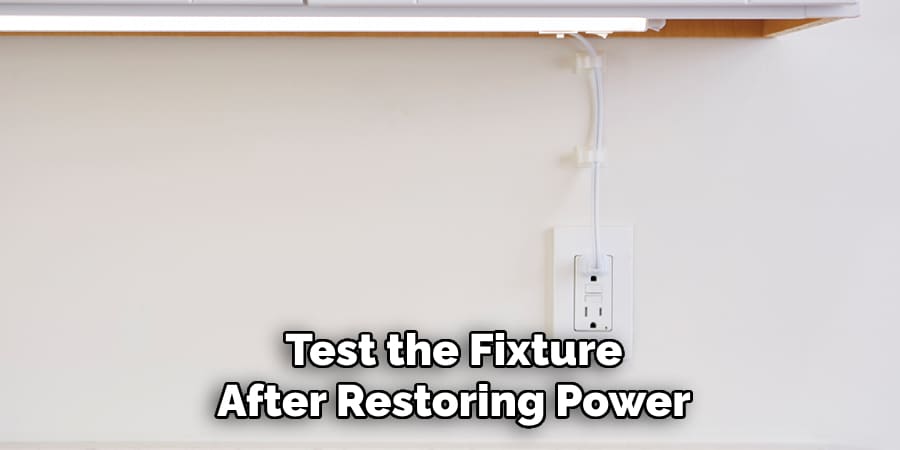Under cabinet lighting plays a crucial role in illuminating workspaces like kitchens, home offices, craft tables, and display shelves. These lights are installed directly beneath cabinets or shelving units and help improve visibility while also adding a stylish touch to your interior.

Beyond enhancing aesthetics, proper under cabinet lighting makes everyday tasks easier—from chopping vegetables to reading recipes and showcasing collectibles. However, like any other lighting solution, the bulbs in these fixtures don’t last forever. They can dim, flicker, or burn out entirely, reducing the efficiency and appeal of your setup.
In this guide, you’ll learn everything you need to know about how to replace under cabinet light bulbs safely. From identifying the type of light fixture you have to safely removing and installing the correct bulb, we’ll walk you through the entire process with step-by-step clarity.
Understanding Under Cabinet Lighting
What Is Under Cabinet Lighting?
Under cabinet lighting refers to lighting fixtures mounted directly beneath kitchen cabinets, bookshelves, or other overhead surfaces. They are commonly used in areas where overhead light doesn’t fully illuminate the workspace below.
This type of lighting is especially prevalent in:
- Kitchens, where it brightens countertops.
- Workbenches, where precision is needed.
- Desks or reading areas, where task lighting matters.
- Display cabinets, to highlight collectibles or decorations.
By offering direct, focused illumination, under cabinet lights eliminate shadows and improve visibility without taking up extra space.
Types of Under Cabinet Light Fixtures
There are several common types of under cabinet light fixtures, each with unique bulb requirements:
- Fluorescent: Tubular lights that are cost-effective but less energy-efficient than modern options. They often require starter ballasts and emit a cooler color temperature.
- Halogen: Bright and compact, halogen bulbs offer excellent color rendering. However, they generate significant heat and have shorter lifespans.
- Xenon: Similar to halogen in brightness and warmth, xenon bulbs last longer and run a bit cooler.
- LED: The most modern and efficient option. LEDs consume less energy, last longer, and are available in various forms—bars, strips, puck lights, or modules.
Why Bulbs Need Replacement
There are several reasons why your under cabinet light bulb might need replacing:
- Burnout from prolonged use—all bulbs have a limited lifespan.
- Flickering or dimming, indicating a failing bulb or connection issue.
- Energy efficiency upgrade—switching from halogen or xenon to LED can reduce energy consumption and maintenance.
Tools and Materials You’ll Need

Before starting the replacement process, gather these tools and materials:
- Replacement bulb (ensure it matches the size, base type, wattage, and voltage).
- Screwdriver (flathead or Phillips, depending on the fixture).
- Gloves, especially for halogen and xenon bulbs, to prevent skin oils from damaging the bulb.
- Step stool or ladder to reach higher cabinets.
- Voltage tester (optional but adds safety when dealing with live wires).
- Microfiber cloth or small brush for cleaning the fixture.
Tip: Always check the label on your existing bulb or fixture for compatibility before purchasing replacements.
Safety First: Preparing to Replace the Bulb
Turn Off the Power
Start by turning off the light using its wall switch. For added safety—especially if you’re unsure about the wiring—turn off the circuit breaker that controls the light fixture. This minimizes the risk of electrical shock during the replacement process.
Let the Bulb Cool
Light bulbs, especially halogen and xenon, get extremely hot during use. After switching the power off, wait at least 5–10 minutes for the bulb to cool down before handling it.
Prepare Your Workspace
Ensure the area around the fixture is dry, well-lit, and easy to work in:
- Lay a soft towel or cloth on the counter or workspace to catch any falling parts or screws.
- If needed, place a portable light nearby to help see better during the replacement.
Step-by-Step Guide on How to Replace Under Cabinet Light Bulbs
Because under cabinet lighting comes in different types, the method for changing the bulb depends on your specific fixture.
Replacing LED Bar or Strip Light Modules
Some LED systems don’t use traditional bulbs but modular light strips.

Steps:
- Remove the fixture cover or lens, usually secured with clips or screws.
- Disconnect the old LED module by unplugging it or unscrewing from its mount.
- Attach the new LED module to the mounting bracket or connector.
- Replace the cover and turn the power back on to test the light.
Note: If you have an integrated LED fixture and the lights aren’t replaceable, you may need to replace the entire unit.
Replacing LED or Halogen Puck Light Bulbs
These round, compact fixtures are common in kitchens and display cabinets.
Steps:
- Remove the outer lens, which may twist off or be secured with screws.
- Gently pull or twist out the bulb. These are usually MR16, G4, or similar types.
- Insert the new bulb, making sure the pins are aligned correctly and seated fully.
- Replace the lens, secure it, and test the light.
Always wear gloves to avoid touching halogen bulbs directly, as skin oils can reduce bulb lifespan.
Replacing Fluorescent Tube Bulbs
Fluorescent tubes are usually found in older kitchens.
Steps:
- Slide off or unclip the plastic lens cover to expose the tube.
- Rotate the tube 90 degrees to release it from the socket.
- Remove the old tube, noting its size and type.
- Insert the new tube and rotate it to lock into place.
- Reattach the cover and test the fixture.
If the light doesn’t turn on, the ballast may be faulty and require replacement.
Replacing Xenon Bulbs
Xenon under cabinet lights are similar to halogen but more durable.
Steps:
- Remove the housing cover, which may clip or screw off.
- Use gloves to pull out the old bulb, usually a festoon-style or T3 wedge base.
- Push the new bulb into the terminals, avoiding direct contact with the glass.
- Secure the cover and test the fixture after restoring power.
Testing the New Bulb

Once you’ve installed the new bulb:
- Restore power at the wall switch or breaker.
- Test the light to ensure it works properly and isn’t flickering.
- If it doesn’t turn on:
- Check that the bulb is properly seated.
- Confirm the bulb is the correct type and voltage.
- Use a voltage tester to check for live current.
- Inspect the fixture for wear or damage.
Optional: Clean and Maintain the Fixture
During replacement, it’s a good opportunity to clean the fixture.
- Dust and debris can accumulate over time—wipe them away with a microfiber cloth.
- Check for grease or grime buildup, especially in kitchen environments.
- Inspect wiring for any corrosion or discoloration that could indicate electrical issues.
Routine cleaning helps extend the life of the fixture and keeps the light output bright and clear.
Choosing the Right Replacement Bulb
Match the Specifications
Before purchasing a replacement bulb, check:
- Base type: bi-pin, festoon, wedge, or screw-in.
- Voltage: usually 12V or 120V.
- Wattage: using a higher watt bulb than recommended can damage the fixture.
- Bulb dimensions, especially in enclosed housings where space is tight.
Consider Color Temperature
The color of the light affects how your workspace looks and feels:
- 2700K (Warm White) – Cozy, soft glow (like traditional incandescent bulbs).
- 3000K (Soft White) – Slightly cooler, often ideal for kitchens.
- 4000K (Cool White) – Brighter and more neutral tone.
- 5000K (Daylight) – Crisp, bluish-white light best for task lighting.
Choose based on your personal preference and the room’s overall lighting style.
Efficiency and Longevity
- LED bulbs are the most efficient and long-lasting—use up to 80% less energy than halogen or xenon.
- Typical lifespan:
- Halogen: 2,000 hours
- Xenon: 5,000–10,000 hours
- LED: 25,000–50,000+ hours
- LEDs also produce less heat and come in dimmable options, making them ideal for kitchens and workspaces.
When to Consider Replacing the Entire Fixture

Sometimes, replacing the bulb isn’t enough. You may need a new fixture if:
- The socket shows burn marks or melting.
- The bulb keeps flickering despite being replaced.
- The fixture has loose or exposed wiring.
- The light no longer delivers sufficient brightness even with new bulbs.
Upgrading to a new LED fixture is a smart move—many modern models include dimming, smart control, or motion activation and can be installed as plug-in or hardwired units.
Frequently Asked Questions
Q: How do I know what type of under cabinet light bulb I need?
Ans: Check your existing bulb or fixture label for the base type (e.g., G4, MR16, T5), wattage, voltage, and size. You can also take the old bulb to a lighting store or compare it online.
Q: How long do under cabinet LED bulbs last?
Ans: LED bulbs typically last 25,000 to 50,000 hours, depending on usage and quality—significantly longer than halogen or xenon bulbs.
Q: Are all under cabinet lights dimmable?
Ans: No. Dimming depends on the bulb type, fixture, and wall switch. If you want dimmable lighting, ensure all components are compatible with dimming.
Q: What color temperature is best for under cabinet lighting?
Ans: Warm white (2700K–3000K) for cozy spaces; cool white (4000K) or daylight (5000K) for bright, functional task lighting.
Conclusion
Replacing an under cabinet light bulb is a simple and cost-effective home improvement task that anyone can do with a few basic tools and precautions. Whether you’re swapping out a fluorescent tube, a puck-style LED, or a festoon xenon bulb, the key steps remain the same: identify the type, turn off power, safely remove the old bulb, and install a matching new one.
With the right replacement and a little care, your workspace or kitchen will be bright and functional once again. If your fixtures are aging or inefficient, consider upgrading to LED systems for better light quality, energy efficiency, and longer life.
Make it a habit to check your lighting regularly—and keep your under cabinet areas shining bright and safe.
